© 2024 ALLCITY Network Inc.
All rights reserved.

On the morning of November 23, 2001, the Colorado Buffaloes were already assured of their best football season in five years. With an 8-2 record, the Buffs were ranked 14th in the AP Poll and 15th in the BCS. Head coach Gary Barnett had promised a “return to dominance” when he took over as head coach, and they were on the cusp of doing just that. Their opponent that day was ranked #1 in the BCS. They had also beaten CU nine consecutive times, with each loss somehow closer and more agonizing than the last. The Buffs had seen multiple conference titles, and a possible national title in 1994, go up in smoke at the hands of the hated Nebraska Cornhuskers.
What transpired that day deserves far more space than I can give in this format. Nebraska fans call it “Black Friday”, while CU fans prefer to reference the final score: 62-36. On that cold Boulder afternoon, the Buffs scored more points on the vaunted Husker defense than any other team in history to that point. Nebraska hadn’t surrendered more than 40 points in over a decade, and CU had 42 by halftime. The result sent shockwaves throughout college football. It was Nebraska’s “the emperor has no clothes” moment, and the program hasn’t been a national contender since. Neill Woelk, then of the Boulder Daily Camera, called it the greatest win in CU history, and many fans agree with him. It was certainly the most cathartic.
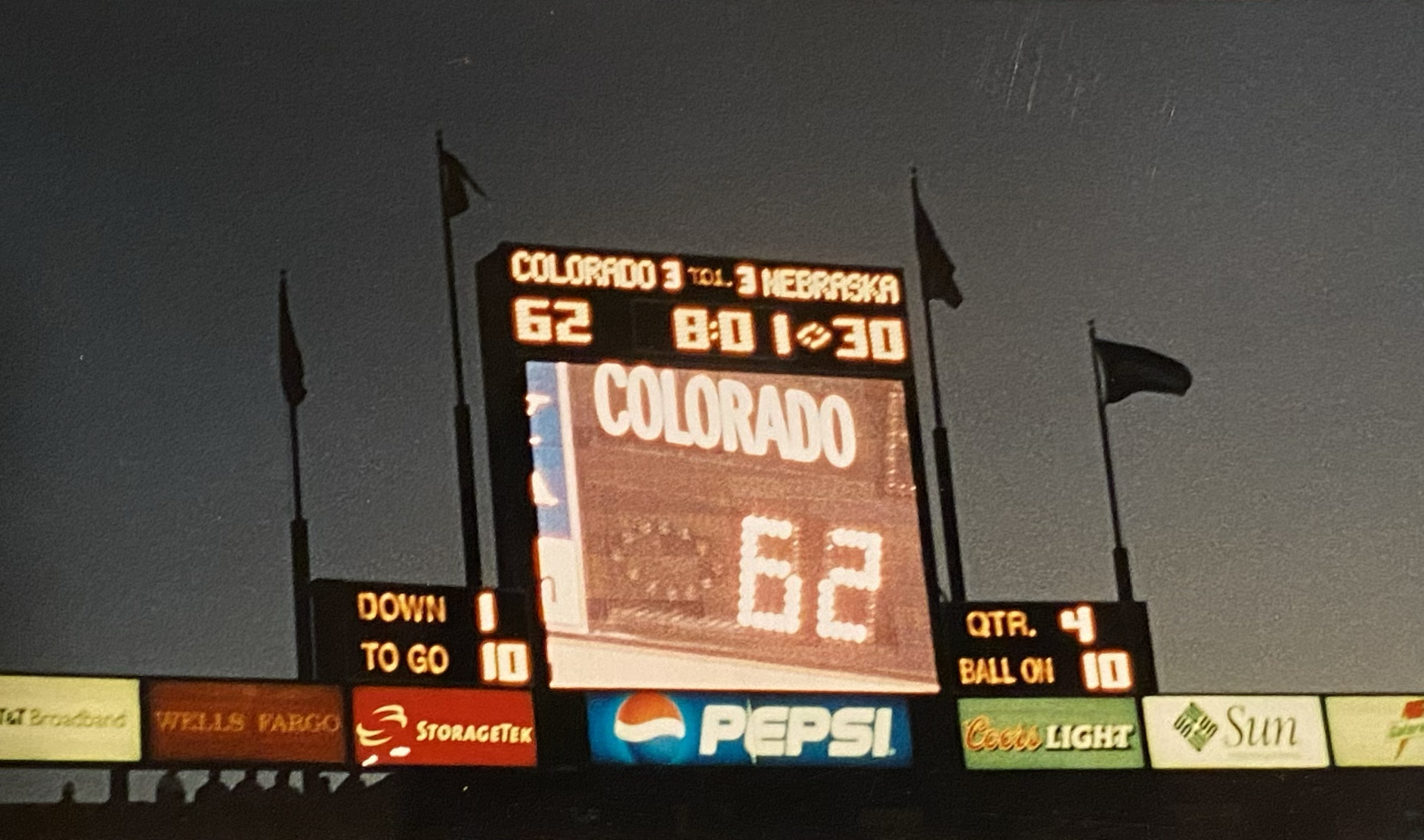
“62-36” was also the final game before Folsom Field’s appearance changed dramatically. The familiar east side facade, in place since 1956, was about to be obscured by the first major expansion of the stadium in over three decades.
CU had only sold out two games between 1998 to 2001 (both against Nebraska), so it struck some observers as odd when Athletic Director Dick Tharp announced plans to expand Folsom Field. The mid-90s dream of adding 8 to 10,000 seats had now morphed into a plan to add 2,000 club seats and 28 private boxes to the east side of the stadium. Originally, Tharp wanted to raise $94 million for the project, which would also include a new indoor practice facility. But when construction began following the 2001 season, the price tag was $42 million, and there was no more talk of an IPF.
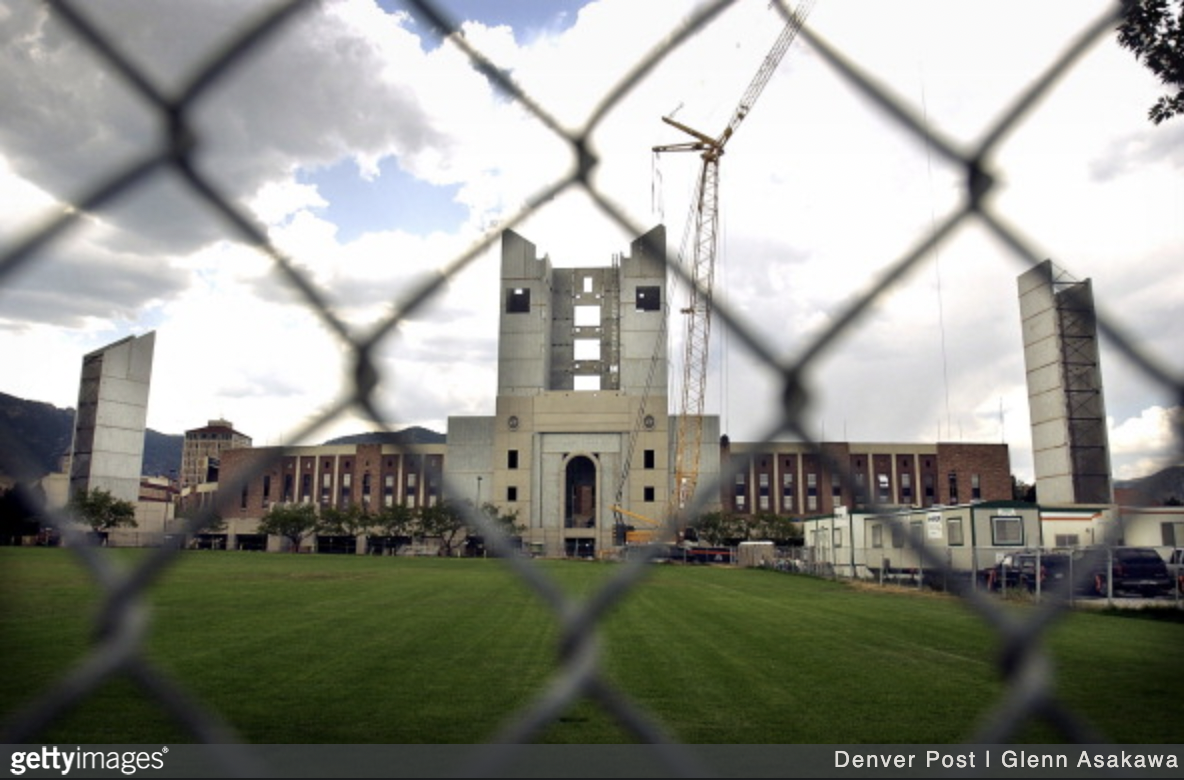
Raising funds for the club level proved an easier task than anticipated when the corporate suites leased at a brisk pace, and the number of suites grew from 28 to 40 when architectural firm Sink Combs Dethlefs showed it could be done for less than the original budget. Sales of the regular club seats were less brisk, but eventually they became more desirable for fans than the aging Flatirons Club on the opposite sideline. Construction crews broke ground in April of 2002 and the new addition was topped off in December. It was ready to open when CU hosted UCLA in the first home game of the 2003 season. Folsom’s capacity now stood at a record 53,750.
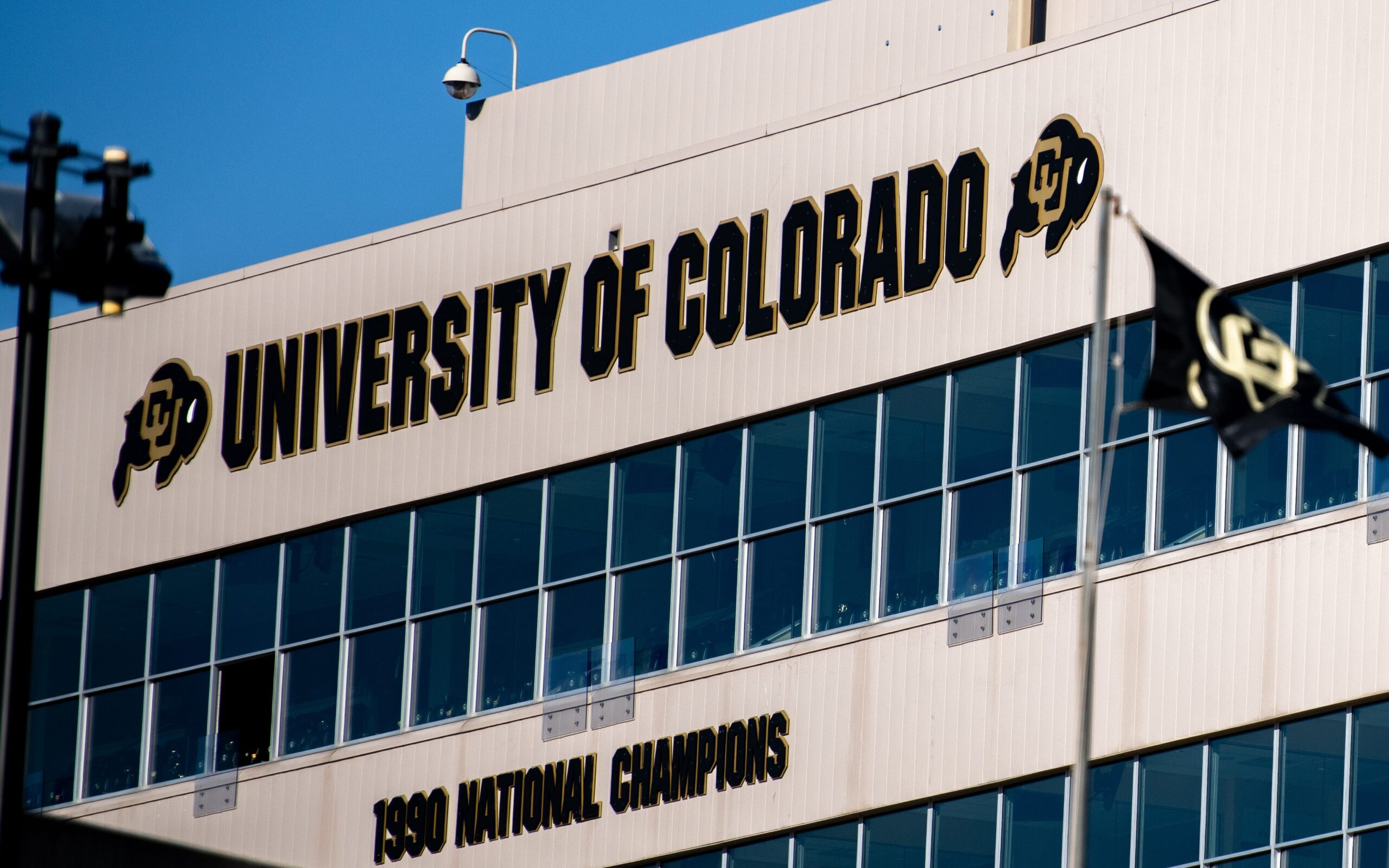
The east side club level was the most dramatic change to Folsom’s appearance in nearly half a century, and the results were a mixed bag. The stadium now had a very different look from the street, and the addition used a pinker shade of Sandstone than the rest of CU’s campus architecture. Its Italianate balconies and other touches fail to give it a truly classical appearance, because it sits over an open-air concourse and the empty space makes it look top-heavy. If the intent was to leave the 1956 exterior visible from the street it was a nice thought, but you really can’t see it unless you’re already on the concourse.
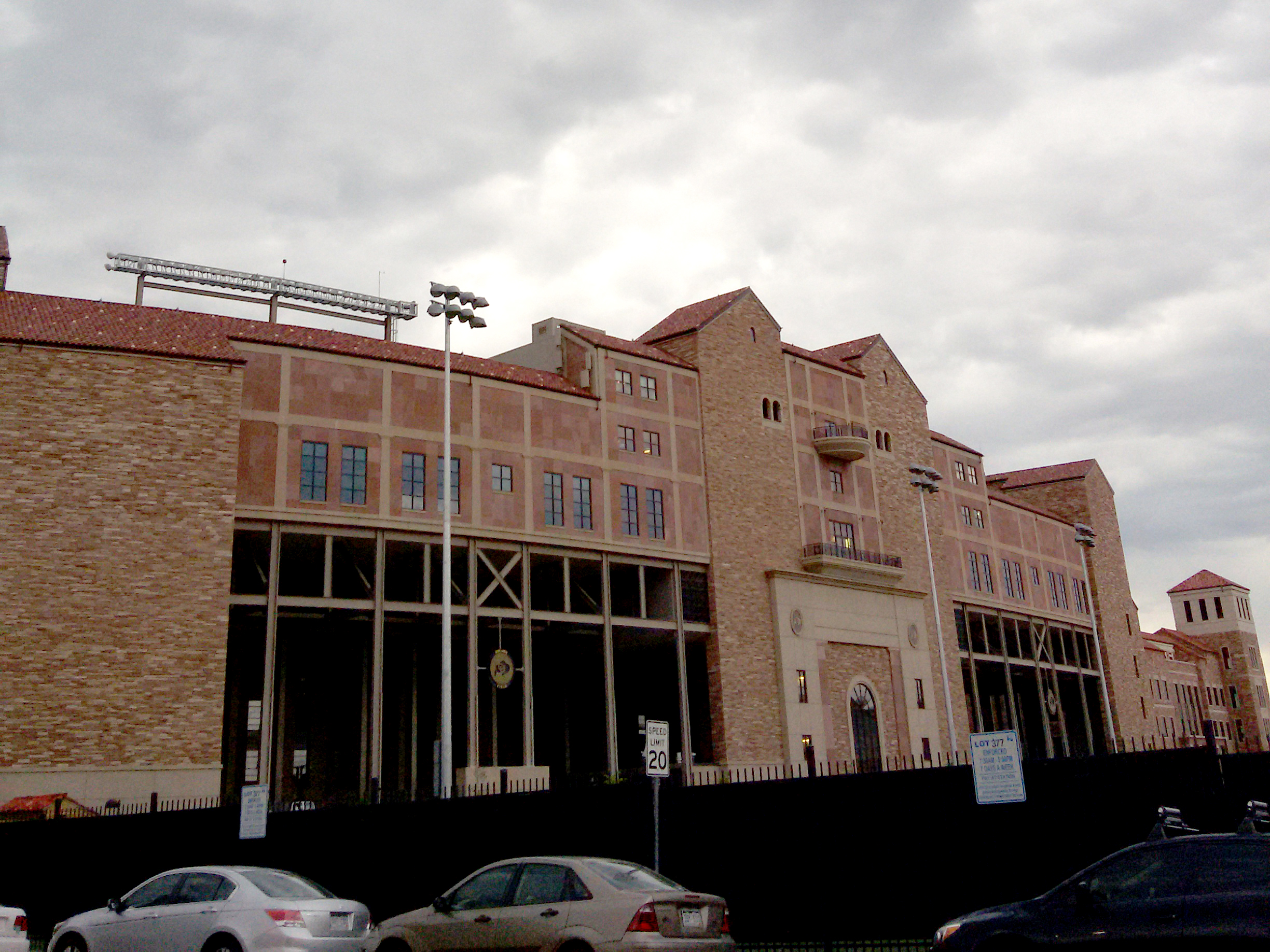
Inside the stadium, the gleaming row of glass boxes framed by silver metal is badly out of step with the rest of Folsom’s aesthetics. For years when I was a child I thought it was Folsom’s press box, because that’s what it looks like. Such unwieldy additions are ubiquitous at college stadiums, but I feel like there was a missed opportunity to do something more unique that would have fit better with its surroundings.
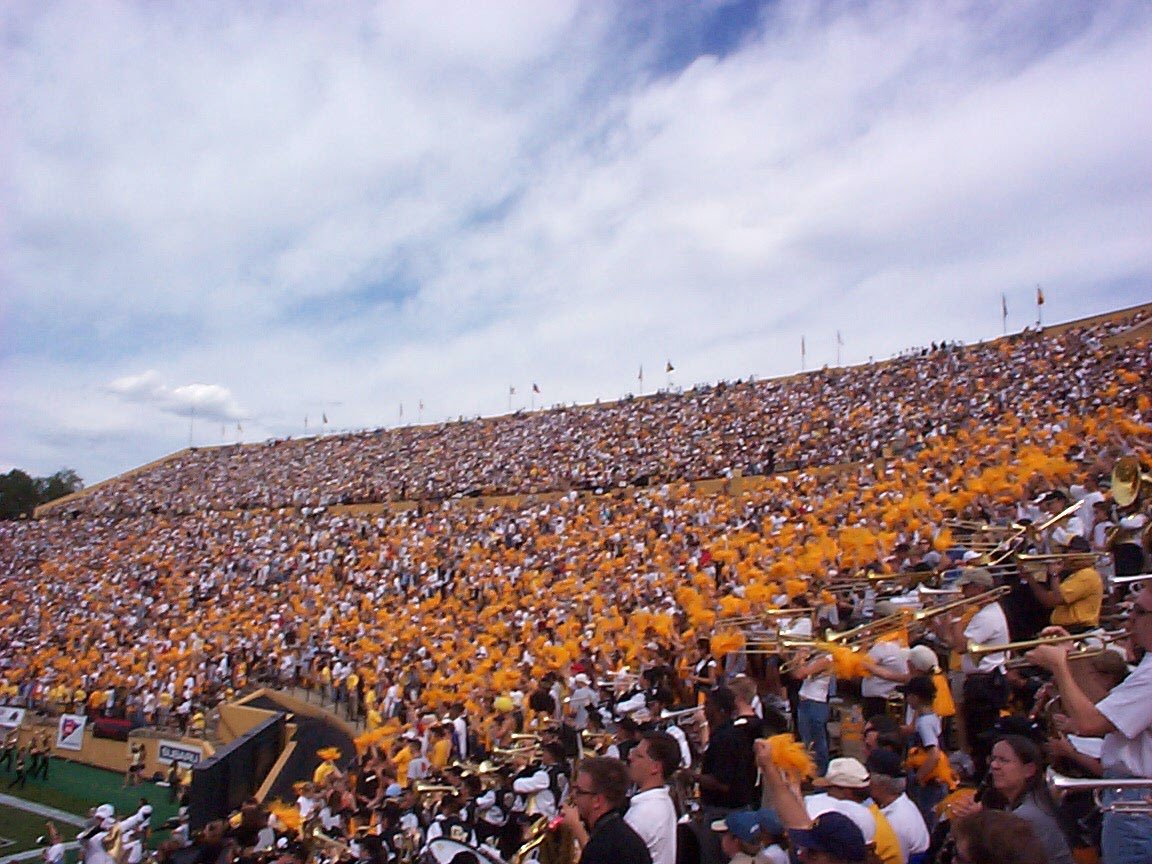
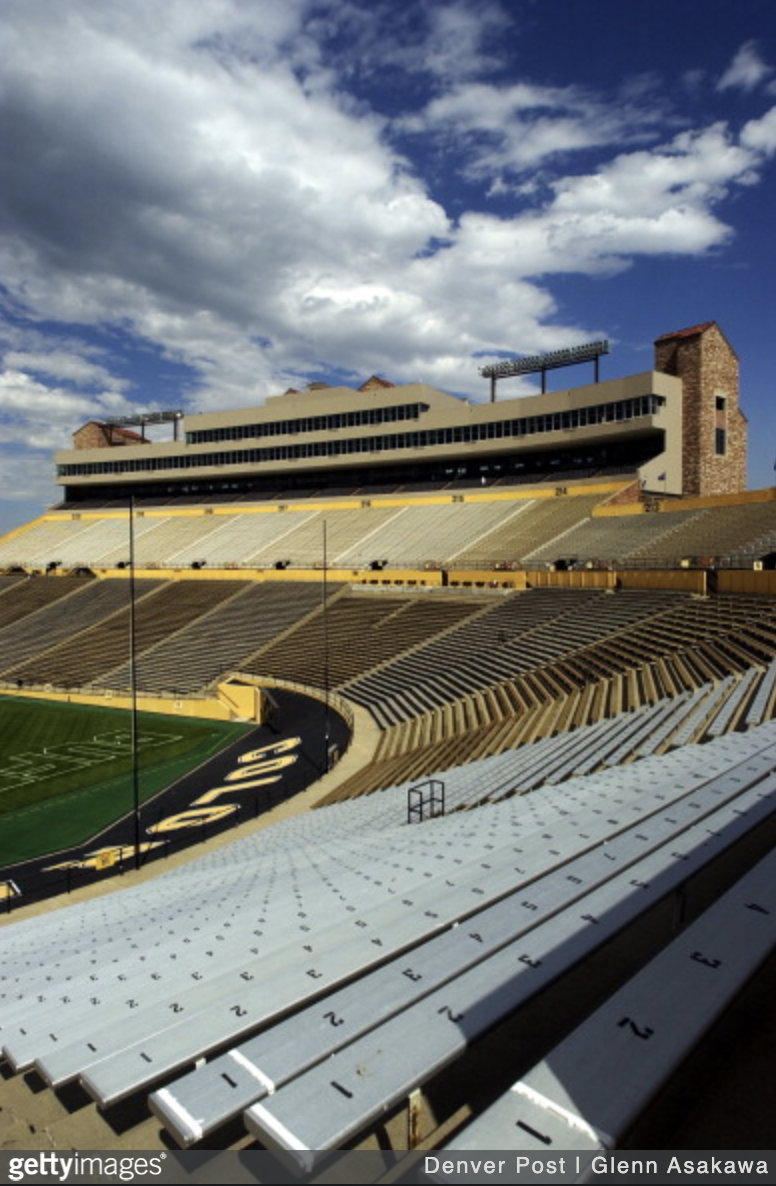
On a positive note, the new addition – despite only bringing a modest increase in capacity – had the effect of making the stadium feel much larger and more imposing. It also gave Folsom Field permanent lighting for the first time. And for those shelling out the money to sit there, the club level affords spectacular views of the entire front range and, on a clear day, higher and farther peaks as well.
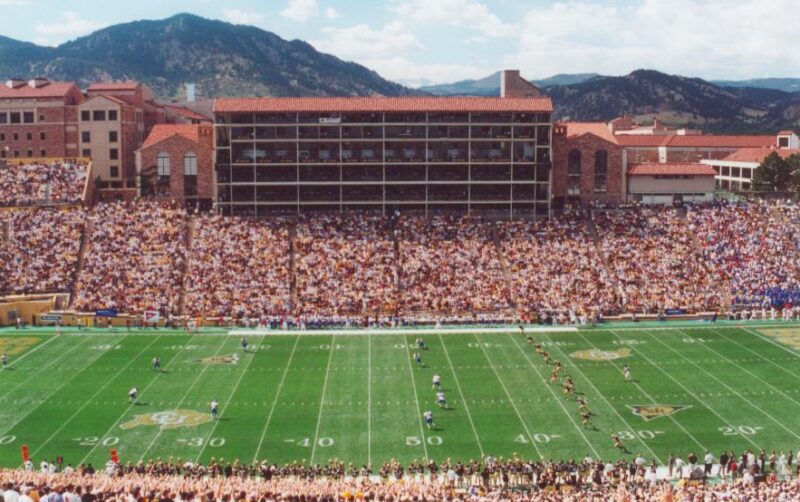
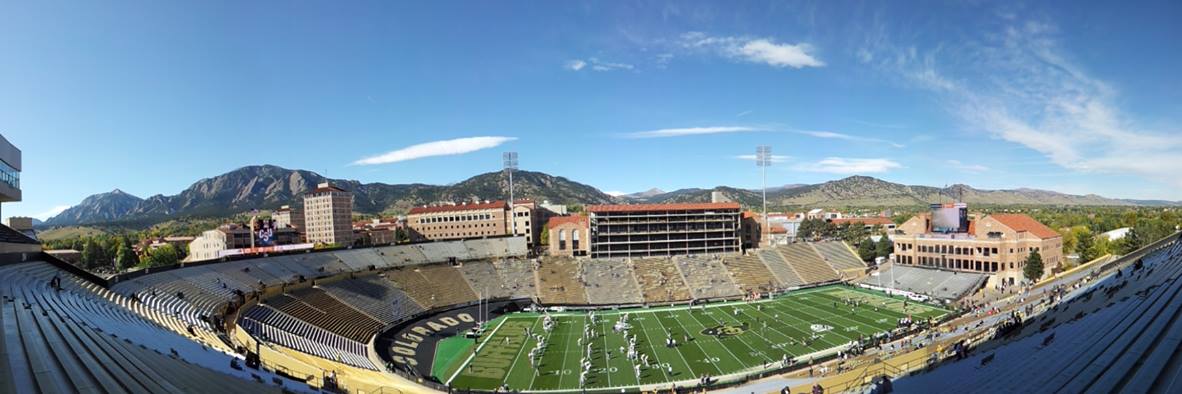
The first classic game in Folsom’s new configuration was the 2004 Rocky Mountain Showdown. After six years in Denver, the game came back to campus and a new record crowd of 54,954 was on hand. With time winding down, CSU had the ball on the two yard line, trailing by only three points. The Rams inexplicably failed to come away with so much as a field goal, and time expired after two unsuccessful running plays.
Following the lightning-filled thriller at Mile High the previous year, it seemed like the RMS had reached peak intensity; only for the 2005 edition to stake its claim as the wildest in the history of the rivalry. They squeezed eighteen more people into Folsom than the year before for an attendance record of 54,972 that still stands today. The game is best remembered today for Lawrence Vickers’ iconic touchdown in the first half, but the final minutes make for probably the wildest CU win I’ve ever seen.
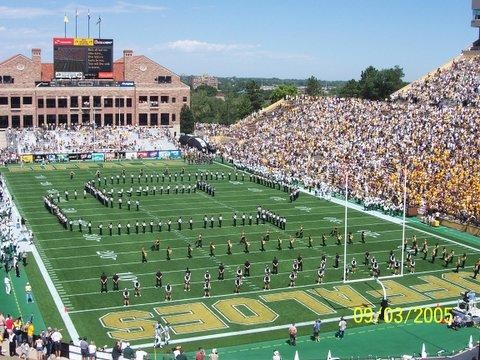
Gary Barnett and Dick Tharp were both out of the picture by 2006 thanks to a combination of off the field scandal and on-field embarrassment that doesn’t need to be recounted here. New AD Mike Bohn and head coach Dan Hawkins were supposed to lead the Buffaloes back to respectability and national prominence, but it didn’t happen. I attended the first victory of the Hawkins era, which was also my first field storming at Folsom as an 11 year-old who snuck into the student section.
There would be other field storms, including after a shocking come-from-behind upset of third-ranked Oklahoma in 2007, but Hawkins never had a winning season in Boulder. By the time he was fired in 2010, CU’s lack of facilities upgrades for the football team had become a major sore spot for the athletic department. An inflatable practice bubble was finally installed before the 2007 season – sixteen years after Bill McCartney proposed one – but a true indoor practice facility remained elusive. Hawkins also campaigned for an expansion of Dal Ward. It wasn’t forthcoming.
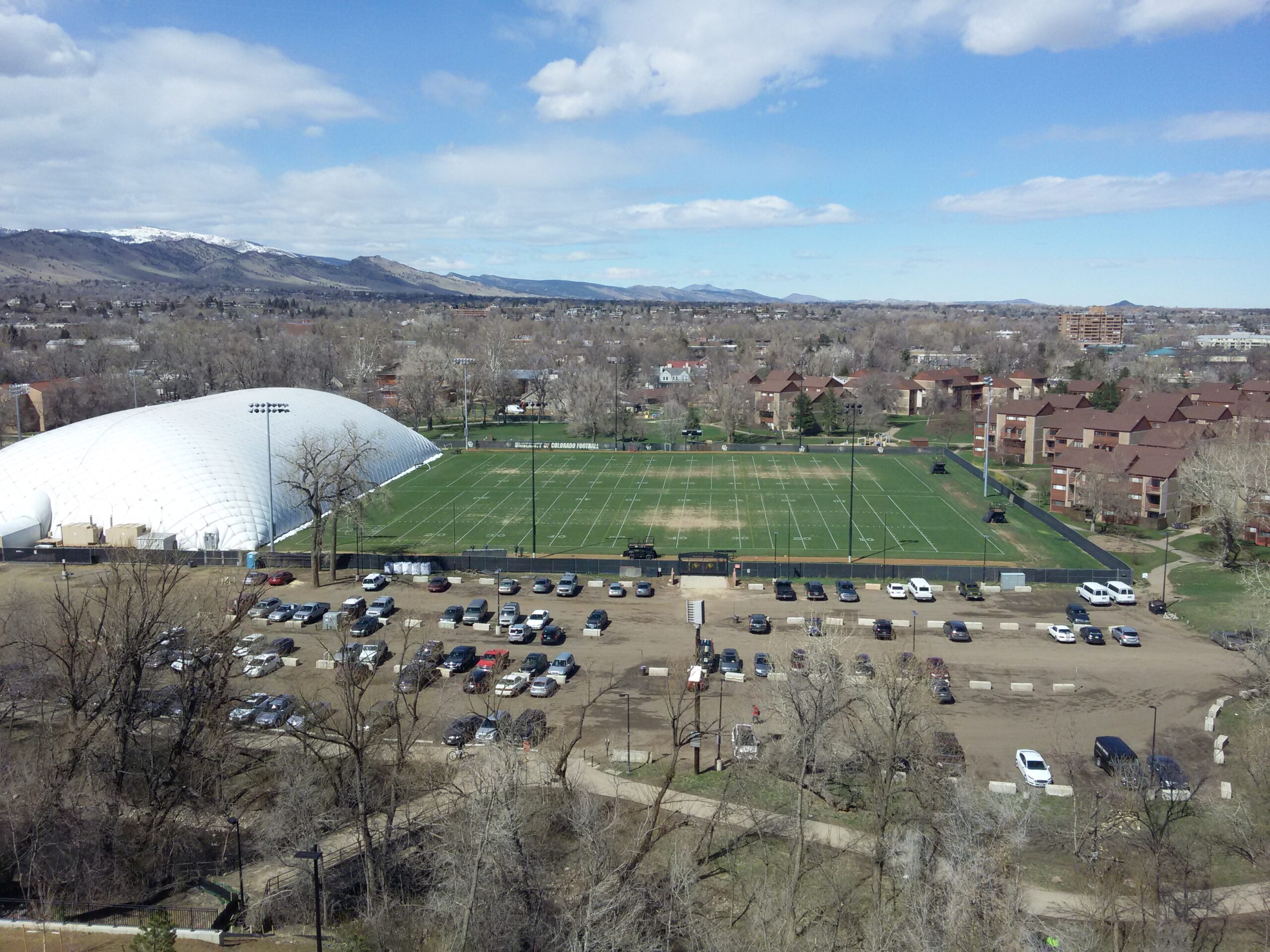
One lasting tradition that began during the Hawkins era was the annual “blackout” game, which started as a student-led campaign in the buildup to a late night 2007 game against Florida State. The effect of 53,000 people wearing black was impressive, and CU has done it every year since. Rebranded in later years as the “wear black” game by the athletic department because of the alcoholic connotations of “blackout”, the new tradition gave Ralphie V her nickname. One of her first runs was the 2008 blackout game against West Virginia, which CU won in part thanks to WVU kicker and future media personality Pat McAfee’s missed field goal in overtime.
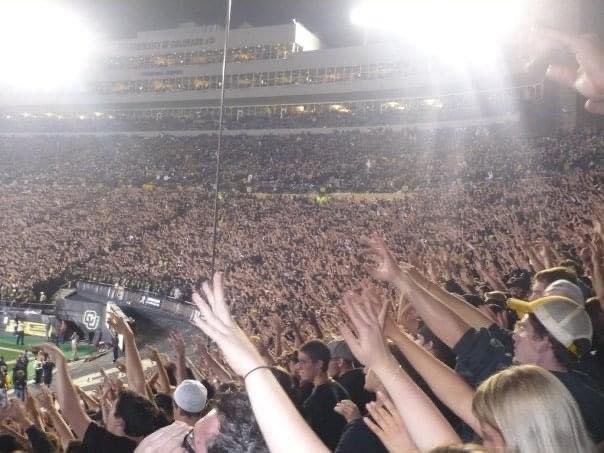
After Hawkins’ dismissal, Mike Bohn hired former CU tight end Jon Embree, who had never been so much as a coordinator at any level, in a move that was bound to be remembered as either inspired or foolish. It was the latter.
Changes to Folsom Field during these lean years were mostly minor. Permanent light poles on the west side, first announced in 2002, were finally installed before the 2009 season, and LED panels replaced all three of Folsom’s old scoreboards in 2012. Those new boards displayed some of the ugliest final scores in Folsom’s history that season, and Embree was gone after only two years as coach.
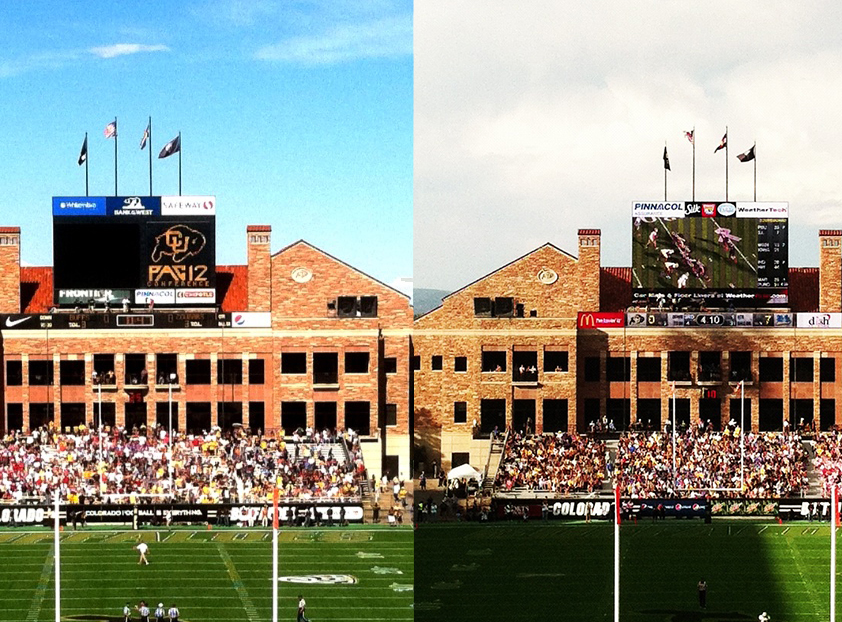
It was a dark time for CU football. Into the picture stepped Mike MacIntyre, and his contract contained an interesting stipulation. If CU did not draw up a plan for new football facilities by December 1, 2013 – and award a contract to a construction firm by December 1, 2014 – he could resign his post with no penalties. It was time to find out if CU was willing to play with the big boys in the facilities race, as well as whether they could afford to.
On February 21, 2013, Mike Bohn announced the plan. CU was to build an enormous new athletics building twice the size of Dal Ward, plus the long-awaited indoor practice facility. The price tag was an estimated $170 million. It was a big leap, and the money required was immense. Bohn wouldn’t get the chance to raise it. By May, he had resigned under intense pressure from above. The responsibility for raising the funds for what would come to be known as the Champions Center fell to his successor, and the project would have implications beyond what anyone could have anticipated at the time.
Next time: the Champions Center, the Rise, Midnight Mel, and Prime Time.
Folsom’s 25 Greatest Games nominees from this chapter:
- October 20, 2001 vs. #25 Texas A&M – a late fumble recovery returned for a touchdown gives #20 CU a 31-21 victory, and some attribute the turnover to the invisible hand of legendary former CU SID Fred Casotti, who died the day before.
- November 23, 2001 vs. #1 Nebraska – the score says it all. 62-36.
- October 5, 2002 vs. #13 Kansas State – a thrilling back-and-forth affair with multiple long CU touchdowns, including a 94-yard dash from Jeremy Bloom
- September 4, 2004 vs. Colorado State – the goal line stand discussed earlier
- September 3, 2005 vs. Colorado State – a rematch that somehow topped the original
- September 29, 2007 vs. #3 Oklahoma – a huge upset that was also a stunning comeback. Kevin Eberhart hit the game winning field goal as time expired for a 27-24 win. It felt like a big deal at the time.
- November 23, 2007 vs. Nebraska – six years after 62-36, the two rivals were merely fighting for bowl eligibility on this frigid Black Friday. CU scored 34 unanswered points after trailing by 11 at halftime and won a wild one 65-51. It felt like a big deal at the time.
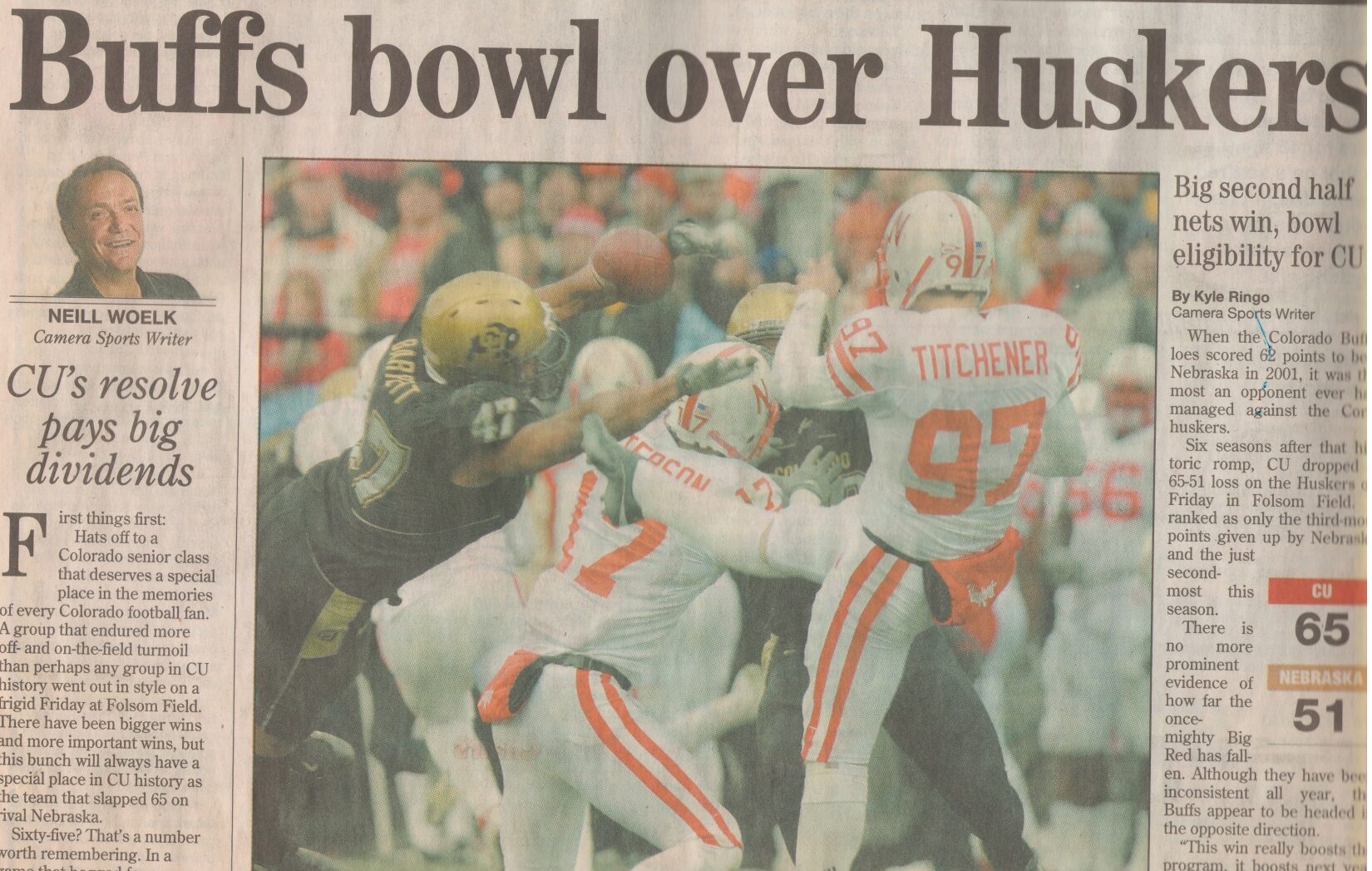
- September 18, 2008 vs. #21 West Virginia – before Folsom Field’s second ever blackout crowd, the Buffs scored two early touchdowns, then failed to score again until the game winning kick in overtime. It felt like a big deal at the time.
- October 2, 2010 vs. Georgia – CU won a 29-27 nail-biter thanks to a late fumble recovery. This was another blackout game and the environment was memorable, with many UGA fans making the trek to Boulder. It wound up being Dan Hawkins’ final win as a Division I FBS head coach.
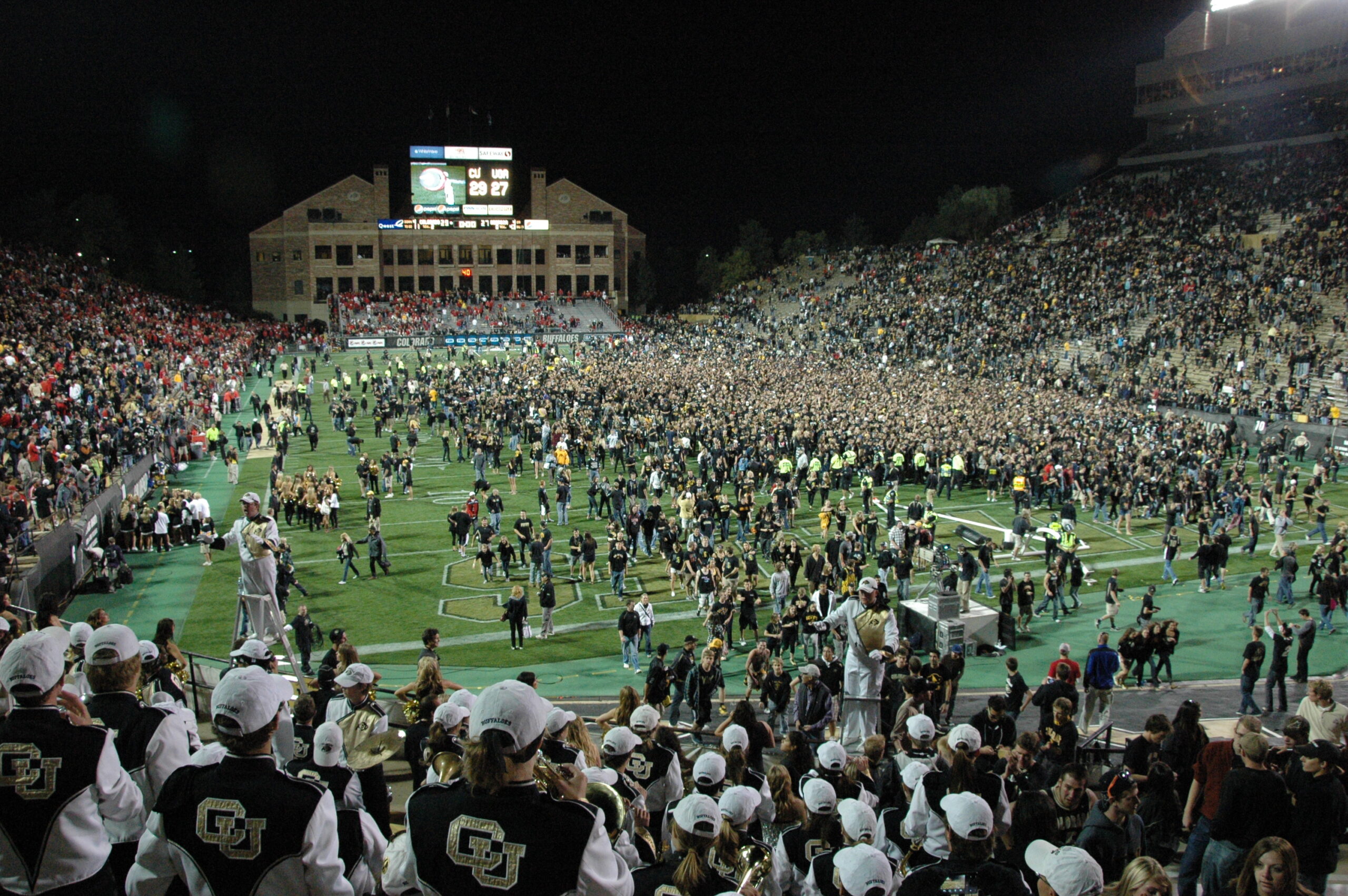
Comments
Share your thoughts
Join the conversation

The Comment section is only for diehard members
Scroll to next article


